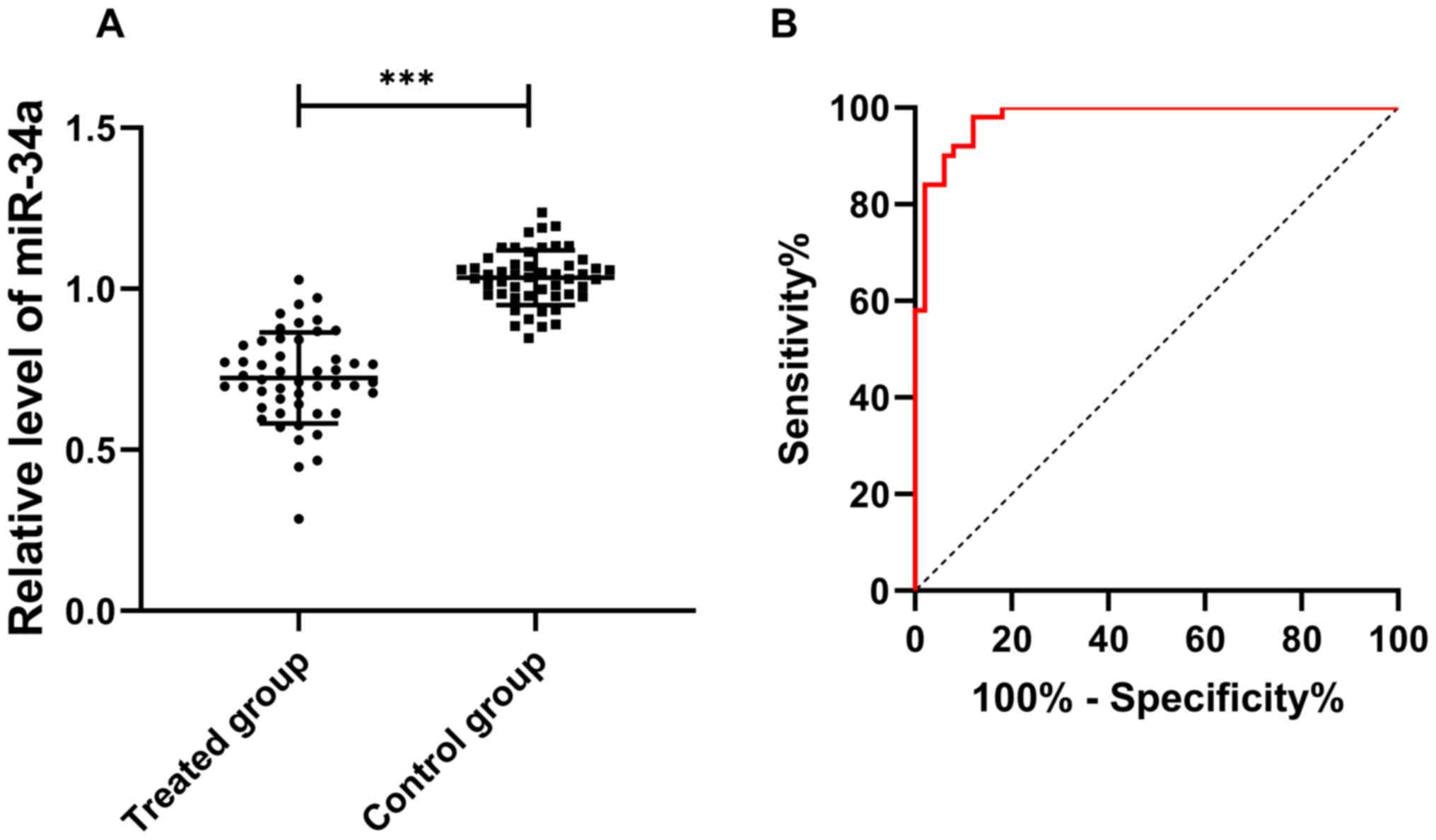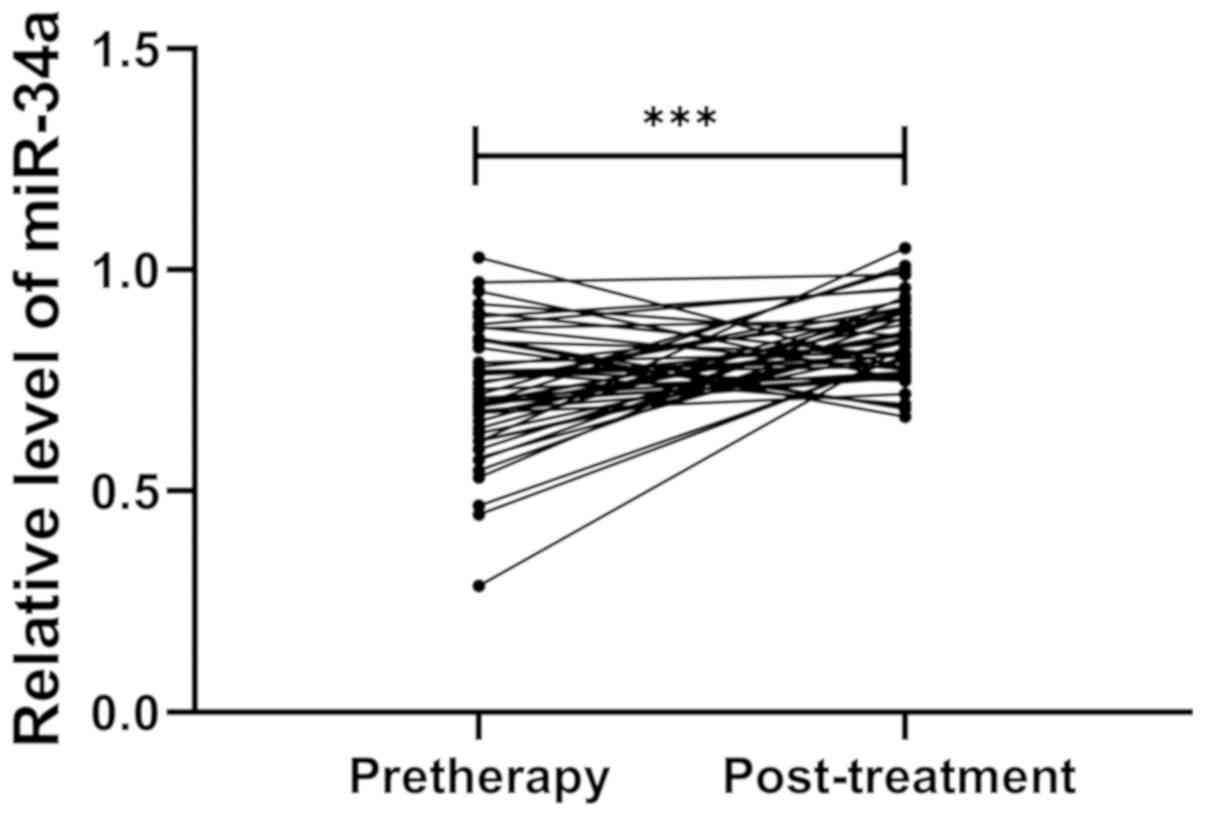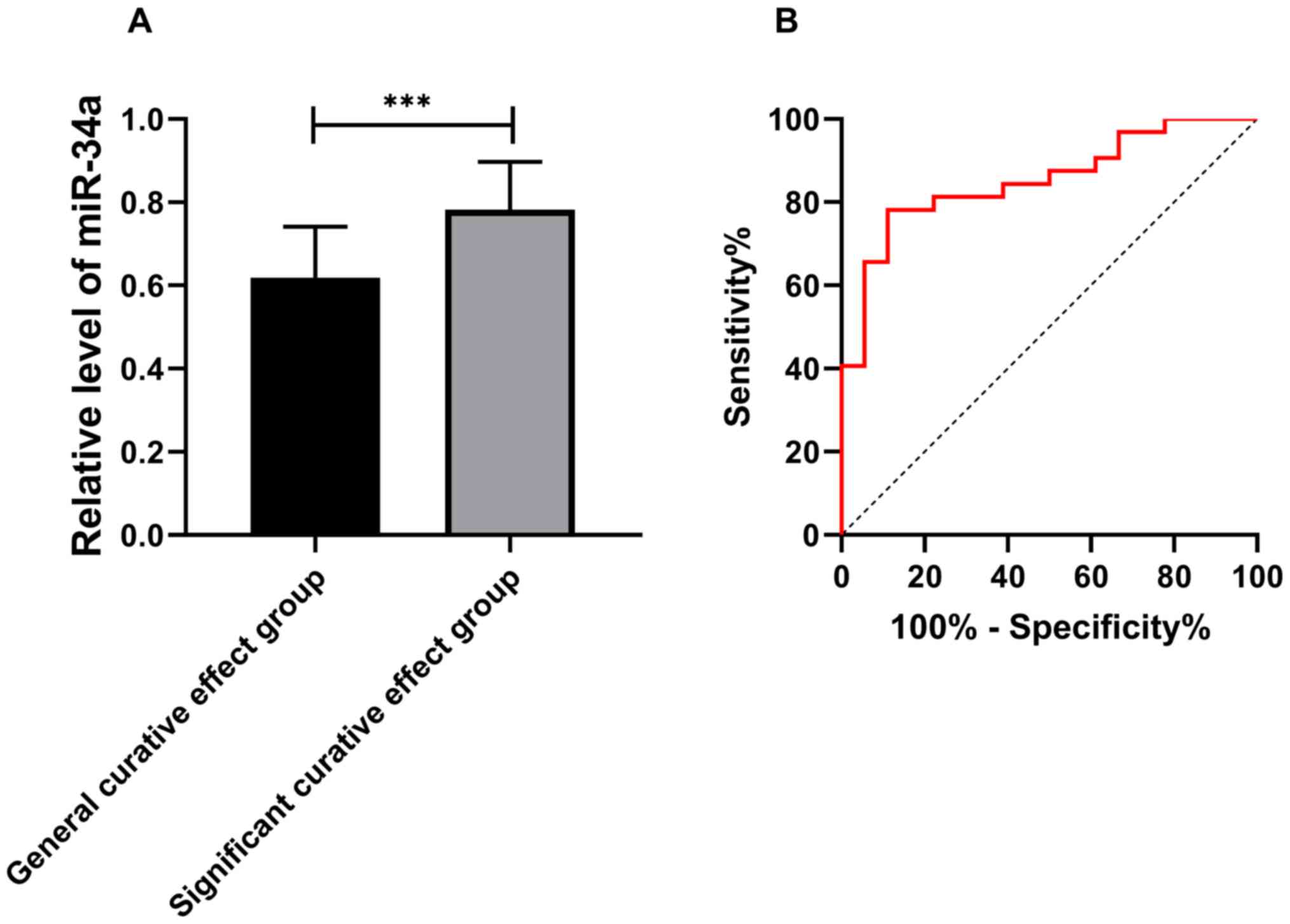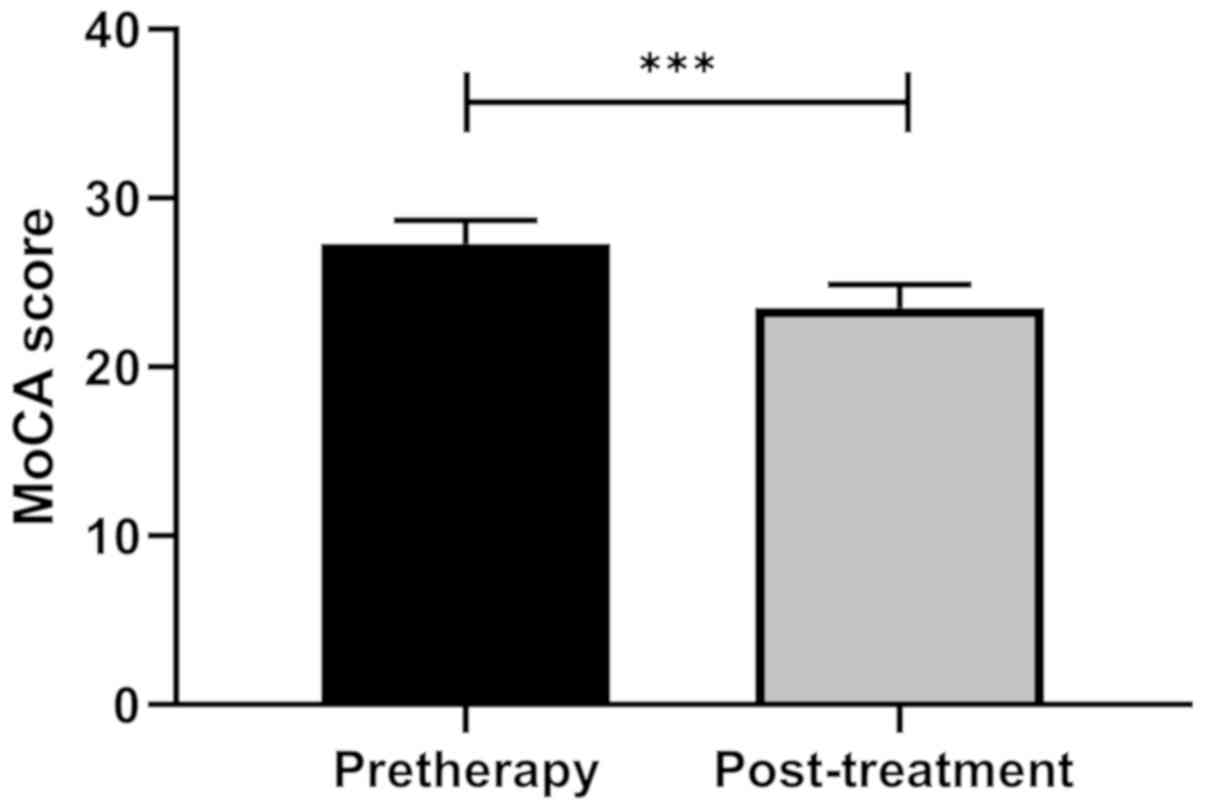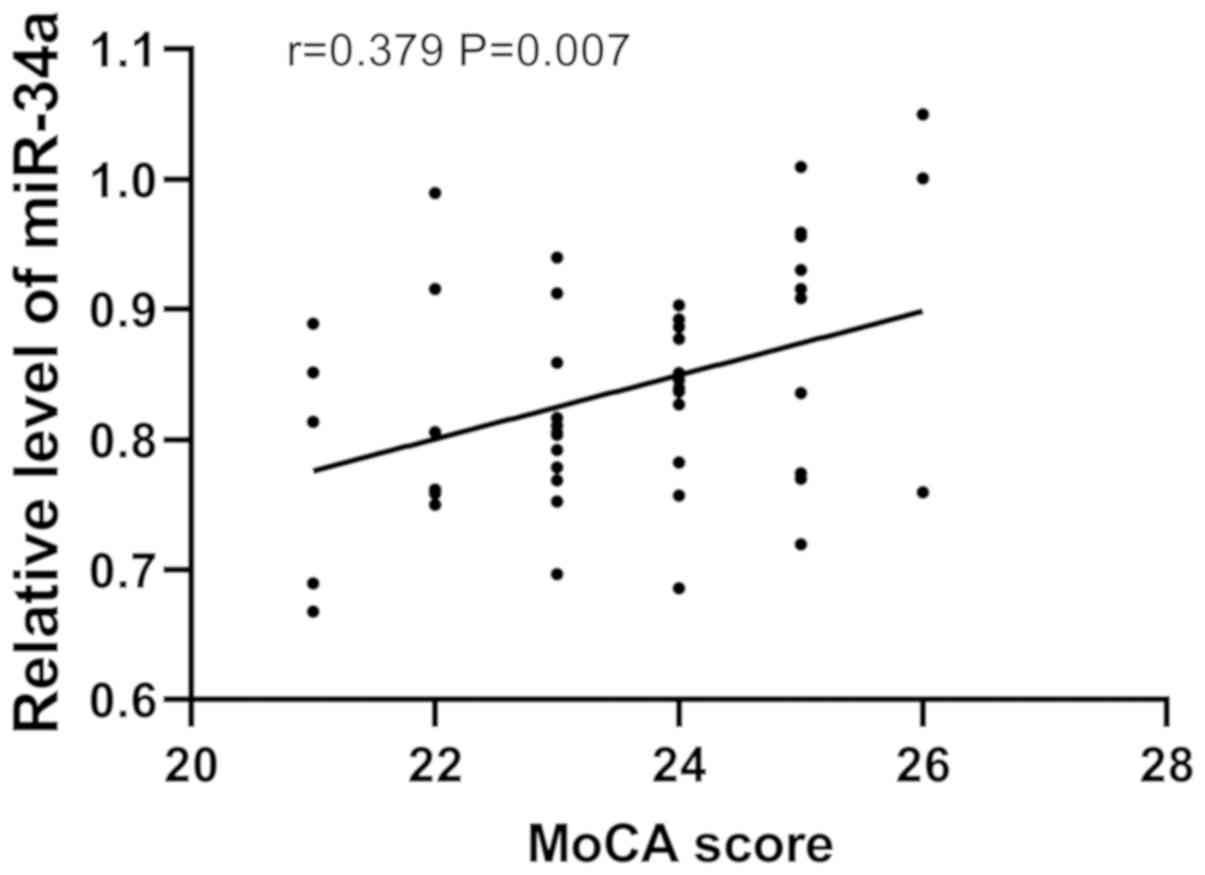|
1
|
Chua MLK, Wee JTS, Hui EP and Chan ATC:
Nasopharyngeal carcinoma. Lancet. 387:1012–1024. 2016. View Article : Google Scholar : PubMed/NCBI
|
|
2
|
Chen W, Zheng R, Baade PD, Zhang S, Zeng
H, Bray F, Jemal A, Yu XQ and He J: Cancer statistics in China,
2015. CA Cancer J Clin. 66:115–132. 2016. View Article : Google Scholar : PubMed/NCBI
|
|
3
|
Sun Y, Li WF, Chen NY, Zhang N, Hu GQ, Xie
FY, Sun Y, Chen XZ, Li JG, Zhu XD, et al: Induction chemotherapy
plus concurrent chemoradiotherapy versus concurrent
chemoradiotherapy alone in locoregionally advanced nasopharyngeal
carcinoma: A phase 3, multicentre, randomised controlled trial.
Lancet Oncol. 17:1509–1520. 2016. View Article : Google Scholar : PubMed/NCBI
|
|
4
|
Ribassin-Majed L, Marguet S, Lee AWM, Ng
WT, Ma J, Chan ATC, Huang PY, Zhu G, Chua DTT, Chen Y, et al: What
is the best treatment of locally advanced nasopharyngeal carcinoma?
An individual patient data network meta-analysis. J Clin Oncol.
35:498–505. 2017. View Article : Google Scholar : PubMed/NCBI
|
|
5
|
Chen YZ, Li WF, Wang JY, Wang JM, Ou RY,
Zheng XW, Xu YS and Zhao L: Evaluation of time-phase effect on
18F-FDG PET/CT delineation methods for treatment
planning of nasopharyngeal carcinoma. Clin Nucl Med. 41:354–361.
2016. View Article : Google Scholar : PubMed/NCBI
|
|
6
|
Chen Z, Xu L, Xu X and Yuan C: The
clinical value of detecting circulating tumour cells in the
peripheral blood of nasopharyngeal carcinoma patients. Oncol Lett.
15:6283–6290. 2018.PubMed/NCBI
|
|
7
|
McDowell LJ, Ringash J, Xu W, Chan B, Lu
L, Waldron J, Rock K, So N, Huang SH, Giuliani M, et al: A cross
sectional study in cognitive and neurobehavioral impairment in
long-term nasopharyngeal cancer survivors treated with
intensity-modulated radiotherapy. Radiother Oncol. 131:179–185.
2019. View Article : Google Scholar : PubMed/NCBI
|
|
8
|
Fasfous AF, Al-Joudi HF, Puente AE and
Pérez-García M: Neuropsychological measures in the Arab World: A
systematic review. Neuropsychol Rev. 27:158–173. 2017. View Article : Google Scholar : PubMed/NCBI
|
|
9
|
Kozomara A, Birgaoanu M and
Griffiths-Jones S: miRBase: From microRNA sequences to function.
Nucleic Acids Res. 47D:D155–D162. 2019. View Article : Google Scholar
|
|
10
|
Gao W, Lam JW, Li JZ, Chen SQ, Tsang RK,
Chan JY and Wong TS: MicroRNA-138-5p controls sensitivity of
nasopharyngeal carcinoma to radiation by targeting EIF4EBP1. Oncol
Rep. 37:913–920. 2017. View Article : Google Scholar : PubMed/NCBI
|
|
11
|
Wu R, Qiu E, Lin R, Wang J and Lin H:
Regulation of nasopharyngeal carcinoma cell proliferation by
targeting Notch1 with miR-34a. Int J Clin Exp Pathol. 9:8811–8816.
2016.
|
|
12
|
Xu Y, Chen P, Wang X, Yao J and Zhuang S:
miR-34a deficiency in APP/PS1 mice promotes cognitive function by
increasing synaptic plasticity via AMPA and NMDA receptors.
Neurosci Lett. 670:94–104. 2018. View Article : Google Scholar : PubMed/NCBI
|
|
13
|
Edge SB and Compton CC: The American Joint
Committee on Cancer: the 7th edition of the AJCC cancer staging
manual and the future of TNM. Ann Surg Oncol. 17:1471–1474. 2010.
View Article : Google Scholar : PubMed/NCBI
|
|
14
|
Dechaphunkul A, Danchaivijitr P,
Jiratrachu R, Dechaphunkul T, Sookthon C, Jiarpinitnun C, Paoin C,
Setakornnukul J, Niyomnaitham S, Suktitipat B, et al: 1076P
Comparison of 3-weekly cisplatin versus 3-weekly carboplatin in
patients with locally advanced nasopharyngeal carcinoma (LA-NPC)
receiving concurrent chemoradiotherapy (CCRT): A multicenter
retrospective study. Ann Oncol. 29 (Suppl. 8):viii3842018.
View Article : Google Scholar
|
|
15
|
Livak KJ and Schmittgen TD: Analysis of
relative gene expression data using real-time quantitative PCR and
the 2(-Delta Delta C(T)) method. Methods. 25:402–408. 2001.
View Article : Google Scholar : PubMed/NCBI
|
|
16
|
Ai QY, King AD, Mo FKF, Law BKH, Bhatia
KS, Ma BB, Poon DMC and Kam MKM: Prediction of distant metastases
from nasopharyngeal carcinoma: Improved diagnostic performance of
MRI using nodal volume in N1 and N2 stage disease. Oral Oncol.
69:74–79. 2017. View Article : Google Scholar : PubMed/NCBI
|
|
17
|
Tan T, Lim WT, Fong KW, Cheah SL, Soong
YL, Ang MK, Ng QS, Tan D, Ong WS, Tan SH, et al: Concurrent
chemo-radiation with or without induction gemcitabine, Carboplatin,
and Paclitaxel: A randomized, phase 2/3 trial in locally advanced
nasopharyngeal carcinoma. Int J Radiat Oncol Biol Phys. 91:952–960.
2015. View Article : Google Scholar : PubMed/NCBI
|
|
18
|
Chan SC, Yeh CH, Yen TC, Ng SH, Chang JT,
Lin CY, Yen-Ming T, Fan KH, Huang BS, Hsu CL, et al: Clinical
utility of simultaneous whole-body 18F-FDG PET/MRI as a single-step
imaging modality in the staging of primary nasopharyngeal
carcinoma. Eur J Nucl Med Mol Imaging. 45:1297–1308. 2018.
View Article : Google Scholar : PubMed/NCBI
|
|
19
|
Agarwal V, Bell GW, Nam JW and Bartel DP:
Predicting effective microRNA target sites in mammalian mRNAs.
eLife. 4:e050052015. View Article : Google Scholar
|
|
20
|
Spence T, Bruce J, Yip KW and Liu FF:
MicroRNAs in nasopharyngeal carcinoma. Linchuang Zhongliuxue Zazhi.
5:172016.(In Chinese).
|
|
21
|
Lee KT, Tan JK, Lam AK and Gan SY:
MicroRNAs serving as potential biomarkers and therapeutic targets
in nasopharyngeal carcinoma: A critical review. Crit Rev Oncol
Hematol. 103:1–9. 2016. View Article : Google Scholar : PubMed/NCBI
|
|
22
|
Chen WY, Liu SY, Chang YS, Yin JJ, Yeh HL,
Mouhieddine TH, Hadadeh O, Abou-Kheir W and Liu YN: MicroRNA-34a
regulates WNT/TCF7 signaling and inhibits bone metastasis in
Ras-activated prostate cancer. Oncotarget. 6:441–457. 2015.
View Article : Google Scholar : PubMed/NCBI
|
|
23
|
Toraih EA, Ibrahiem AT, Fawzy MS, Hussein
MH, Al-Qahtani SAM and Shaalan AAM: MicroRNA-34a: A key regulator
in the hallmarks of renal cell carcinoma. Oxid Med Cell Longev.
2017:32693792017. View Article : Google Scholar : PubMed/NCBI
|
|
24
|
Huang G, Du MY, Zhu H, Zhang N, Lu ZW,
Qian LX, Zhang W, Tian X, He X and Yin L: miRNA-34a reversed
TGF-β-induced epithelial-mesenchymal transition via suppression of
SMAD4 in NPC cells. Biomed Pharmacother. 106:217–224. 2018.
View Article : Google Scholar : PubMed/NCBI
|
|
25
|
Long Z, Wang B, Tao D, Huang Y and Tao Z:
Hypofractionated radiotherapy induces miR-34a expression and
enhances apoptosis in human nasopharyngeal carcinoma cells. Int J
Mol Med. 34:1388–1394. 2014. View Article : Google Scholar : PubMed/NCBI
|
|
26
|
Cui M, Xiao H, Li Y, Dong J, Luo D, Li H,
Feng G, Wang H and Fan S: Total abdominal irradiation exposure
impairs cognitive function involving miR-34a-5p/BDNF axis. Biochim
Biophys Acta Mol Basis Dis. 1863:2333–2341. 2017. View Article : Google Scholar : PubMed/NCBI
|
|
27
|
Qiu Y, Guo Z, Han L, Yang Y, Li J, Liu S
and Lv X: Network-level dysconnectivity in patients with
nasopharyngeal carcinoma (NPC) early post-radiotherapy:
Longitudinal resting state fMRI study. Brain Imaging Behav.
12:1279–1289. 2018. View Article : Google Scholar : PubMed/NCBI
|















